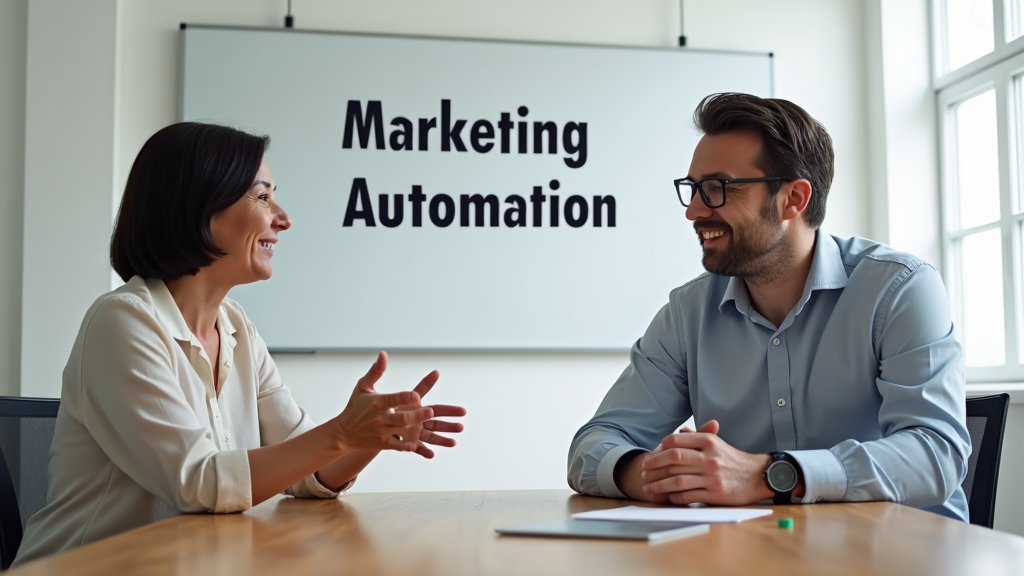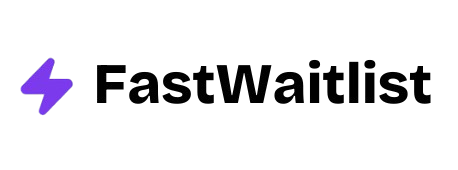
In the fast-moving world of Software as a Service (SaaS), marketing automation has become essential. These tools help companies streamline their marketing efforts, engage customers more effectively, and drive growth. This guide will explore the best SaaS marketing automation tools for 2024, helping you choose the right solutions for your business.
Understanding SaaS Marketing Automation
What Is SaaS Marketing Automation?
SaaS marketing automation refers to the use of software tools to automate repetitive marketing tasks. These tools help SaaS companies manage email campaigns, social media posts, lead generation, and customer relationships more efficiently. By automating these processes, businesses can focus on strategy and creativity rather than getting bogged down in day-to-day tasks.
The importance of marketing automation for SaaS companies cannot be overstated. In a competitive market, the ability to reach the right customers with the right message at the right time can make or break a business. Automation tools provide the speed, precision, and scalability needed to achieve this.
Key Benefits for SaaS Companies
Marketing automation offers several crucial advantages for SaaS businesses. First and foremost, it significantly improves efficiency. Tasks that once took hours can now be completed in minutes, freeing up valuable time for other important activities.
Another major benefit is enhanced personalization. With automation tools, SaaS companies can tailor their marketing messages to individual customers based on their behavior, preferences, and stage in the buying journey. This level of personalization leads to better engagement and higher conversion rates.
Automation also excels at lead nurturing. It allows businesses to guide potential customers through the sales funnel with targeted content and communications, increasing the likelihood of conversion. By providing relevant information at each stage of the customer journey, SaaS companies can build trust and demonstrate the value of their products.
The Evolution of Marketing Automation in SaaS
The field of marketing automation has come a long way since its early days. What started as basic email tools has evolved into sophisticated platforms powered by artificial intelligence and machine learning. Modern SaaS marketing automation tools can analyze vast amounts of data, predict customer behavior, and make real-time decisions to optimize marketing efforts.
Integration with other business systems has also become a key feature of modern marketing automation tools. They can now seamlessly connect with customer relationship management (CRM) software, analytics platforms, and other essential business tools, creating a unified ecosystem for managing customer interactions and data.
Core Features of SaaS Marketing Automation Tools
Email Marketing Capabilities
Email remains a cornerstone of SaaS marketing, and automation tools have greatly enhanced its effectiveness. Modern platforms offer advanced segmentation capabilities, allowing businesses to divide their email lists based on various criteria such as demographics, behavior, and engagement level.
Personalization is another key feature of email automation tools. They can dynamically insert personalized content into emails, such as the recipient's name, company, or recent interactions with the product. This personal touch can significantly increase open rates and engagement.
A/B testing is also a standard feature in many email automation tools. This allows marketers to test different subject lines, content, and designs to see which performs best. By continuously optimizing their email campaigns, SaaS companies can improve their results over time.
Lead Management and Scoring
Effective lead management is crucial for SaaS businesses, and automation tools play a vital role in this process. They can capture leads from various sources, such as website forms, social media, and events, and automatically add them to the company's database.
Lead qualification is another important feature. Automation tools can score leads based on various criteria, such as their engagement with marketing materials, website behavior, and demographic information. This helps sales teams focus their efforts on the most promising prospects.
Lead nurturing workflows are also a key component of marketing automation. These automated sequences of emails and other communications help guide leads through the sales funnel, providing them with relevant information and encouragement at each stage of their journey.
Analytics and Reporting
Data-driven decision making is essential in modern marketing, and SaaS automation tools provide robust analytics and reporting features. They can track a wide range of performance metrics, from email open rates and click-through rates to conversion rates and customer lifetime value.
Return on investment (ROI) tracking is another crucial feature. By connecting marketing activities to actual sales and revenue, these tools help businesses understand which strategies are most effective and where to allocate their resources.
Customer behavior insights are also valuable. By analyzing how customers interact with marketing materials and the product itself, SaaS companies can gain a deeper understanding of their audience and refine their marketing strategies accordingly.
Multi-Channel Marketing
While email is important, modern SaaS marketing requires a multi-channel approach. Many automation tools now offer integrated social media management features, allowing businesses to schedule posts, monitor engagement, and analyze performance across various social platforms.
Paid advertising management is another common feature. These tools can help businesses create, manage, and optimize ad campaigns across multiple platforms, such as Google Ads, Facebook, and LinkedIn.
Content marketing tools are also often included in marketing automation platforms. These can help with content planning, creation, distribution, and performance tracking, ensuring that SaaS companies maintain a consistent and effective content strategy across all channels.

Top SaaS Marketing Automation Tools for 2024
Email Automation Tools
-
Customer.io: This platform excels in behavioral email marketing. It allows SaaS companies to send targeted messages based on how users interact with their product. Customer.io's strength lies in its flexibility and ability to create complex, behavior-driven email campaigns.
-
ActiveCampaign: Known for its powerful automation capabilities, ActiveCampaign offers a wide range of features beyond email marketing. It includes a built-in CRM, making it a good choice for SaaS companies looking for an all-in-one solution.
-
Drip: Drip focuses on e-commerce marketing automation but is also well-suited for SaaS businesses. It offers advanced segmentation and personalization features, along with robust analytics.
-
EngageBay: This all-in-one marketing, sales, and support platform is designed for small and medium-sized businesses. It offers a range of features including email marketing, automation, and CRM at a competitive price point.
Social Media Automation Tools
-
Flick.tech: Specializing in Instagram marketing, Flick.tech helps SaaS companies optimize their hashtag strategy and schedule posts for maximum engagement.
-
Buffer: Buffer is a user-friendly tool for scheduling social media posts across multiple platforms. It also offers analytics to help businesses understand their social media performance.
-
Hootsuite: One of the most comprehensive social media management platforms, Hootsuite allows businesses to manage multiple social networks, schedule posts, and analyze performance from a single dashboard.
Product Adoption and Onboarding Tools
-
Userpilot: This tool helps SaaS companies create interactive product tours and onboarding experiences without coding. It's great for improving user adoption and reducing churn.
-
Pendo: Pendo offers a suite of tools for product analytics, user feedback, and in-app guidance. It's particularly useful for understanding how users interact with your SaaS product.
-
WalkMe: WalkMe specializes in digital adoption platforms, helping businesses guide users through complex processes within their software. It's excellent for improving user onboarding and reducing support tickets.
Self-Serve Support Tools
-
Intercom: Intercom offers a range of customer communication tools, including live chat, chatbots, and a knowledge base. It's great for providing instant support to SaaS users.
-
Zendesk: A comprehensive customer service platform, Zendesk offers tools for ticketing, live chat, and self-service support. It's well-suited for larger SaaS companies with complex support needs.
Paid Advertising Automation Tools
-
AdRoll: AdRoll specializes in retargeting and multi-channel advertising. It's particularly useful for SaaS companies looking to re-engage website visitors and drive conversions.
-
Adzooma: This platform uses AI to optimize Google, Facebook, and Microsoft ad campaigns. It's great for SaaS businesses looking to improve their paid advertising performance.
-
AdEspresso: Owned by Hootsuite, AdEspresso focuses on Facebook and Instagram ad optimization. It offers easy A/B testing and detailed analytics.
-
Drift: While primarily known for its conversational marketing platform, Drift also offers tools for optimizing paid advertising campaigns through personalized landing pages and chatbots.
Choosing the Right SaaS Marketing Automation Tool
Selecting the best marketing automation tool for your SaaS business requires careful consideration of several factors. First, assess your company's size, target audience, and specific marketing goals. A small startup will have different needs compared to a large, established SaaS company.
Next, consider the key factors that will impact the tool's effectiveness for your business. Ease of use is crucial – you want a tool that your team can quickly learn and efficiently operate. Integration capabilities are also important. The tool should seamlessly connect with your existing tech stack, including your CRM, analytics platforms, and other essential software.
Scalability is another vital consideration. As your SaaS business grows, your marketing automation needs will likely become more complex. Choose a tool that can grow with your business, offering advanced features and increased capacity as you need them.
Of course, pricing is always a factor. Consider not just the initial cost, but also the long-term value the tool will provide. Some platforms offer tiered pricing models, allowing you to start with basic features and upgrade as your needs evolve.
Evaluation Process
To choose the right tool, follow these steps:
- Define your requirements: Clearly outline what you need the tool to do.
- Research options: Look into the tools mentioned in this guide and others that might fit your needs.
- Request demos: Most providers offer product demonstrations. Take advantage of these to see the tools in action.
- Test with free trials: Many tools offer free trial periods. Use these to get hands-on experience with the platforms you're considering.
- Get team feedback: Involve your marketing team in the decision-making process. They'll be using the tool daily, so their input is valuable.

Implementing SaaS Marketing Automation Successfully
Once you've chosen a marketing automation tool, successful implementation is key to realizing its benefits. Start by creating a clear implementation strategy. Set specific, measurable objectives for what you want to achieve with the tool. These might include increasing email open rates, improving lead quality, or reducing the time spent on routine marketing tasks.
Define key performance indicators (KPIs) that align with your objectives. These might include metrics like conversion rates, customer acquisition cost, or customer lifetime value. Having clear KPIs will help you measure the success of your automation efforts and identify areas for improvement.
Training your team is crucial for successful adoption of any new tool. Develop a comprehensive onboarding process that covers all aspects of the platform. This should include both initial training and ongoing education to keep your team up-to-date with new features and best practices.
When it comes to adoption, it's often best to start small and scale up. Begin by automating a few key processes and gradually expand as your team becomes more comfortable with the tool. Regularly review your automation workflows and optimize them based on performance data and feedback from your team.
Remember, marketing automation is not a "set it and forget it" solution. It requires ongoing attention and refinement to achieve the best results. Encourage your team to continuously experiment with new approaches and to stay informed about emerging trends and features in marketing automation.
Future Trends in SaaS Marketing Automation
The field of marketing automation is constantly evolving, driven by advances in technology and changing customer expectations. One of the most significant trends is the increasing use of artificial intelligence (AI) and machine learning in marketing automation tools.
AI is enabling more sophisticated predictive analytics, allowing SaaS companies to anticipate customer needs and behaviors with greater accuracy. This is leading to more personalized and effective marketing campaigns.
We're also seeing a growing focus on hyper-personalization. As customers come to expect more tailored experiences, marketing automation tools are evolving to provide ever more granular segmentation and personalization capabilities.
Integration with emerging technologies is another trend to watch. From voice assistants to augmented reality, marketing automation tools are likely to expand their capabilities to encompass these new channels and technologies.
Conclusion
Marketing automation has become an indispensable tool for SaaS companies looking to grow and succeed in a competitive market. By choosing the right tools and implementing them effectively, businesses can streamline their marketing efforts, improve customer engagement, and drive growth.
As you explore the options available, remember that the best tool for your business will depend on your specific needs, goals, and resources. Take the time to thoroughly evaluate your options and don't be afraid to experiment with different tools and approaches.
With the right marketing automation strategy in place, your SaaS business will be well-positioned to attract, engage, and retain customers in 2024 and beyond.
